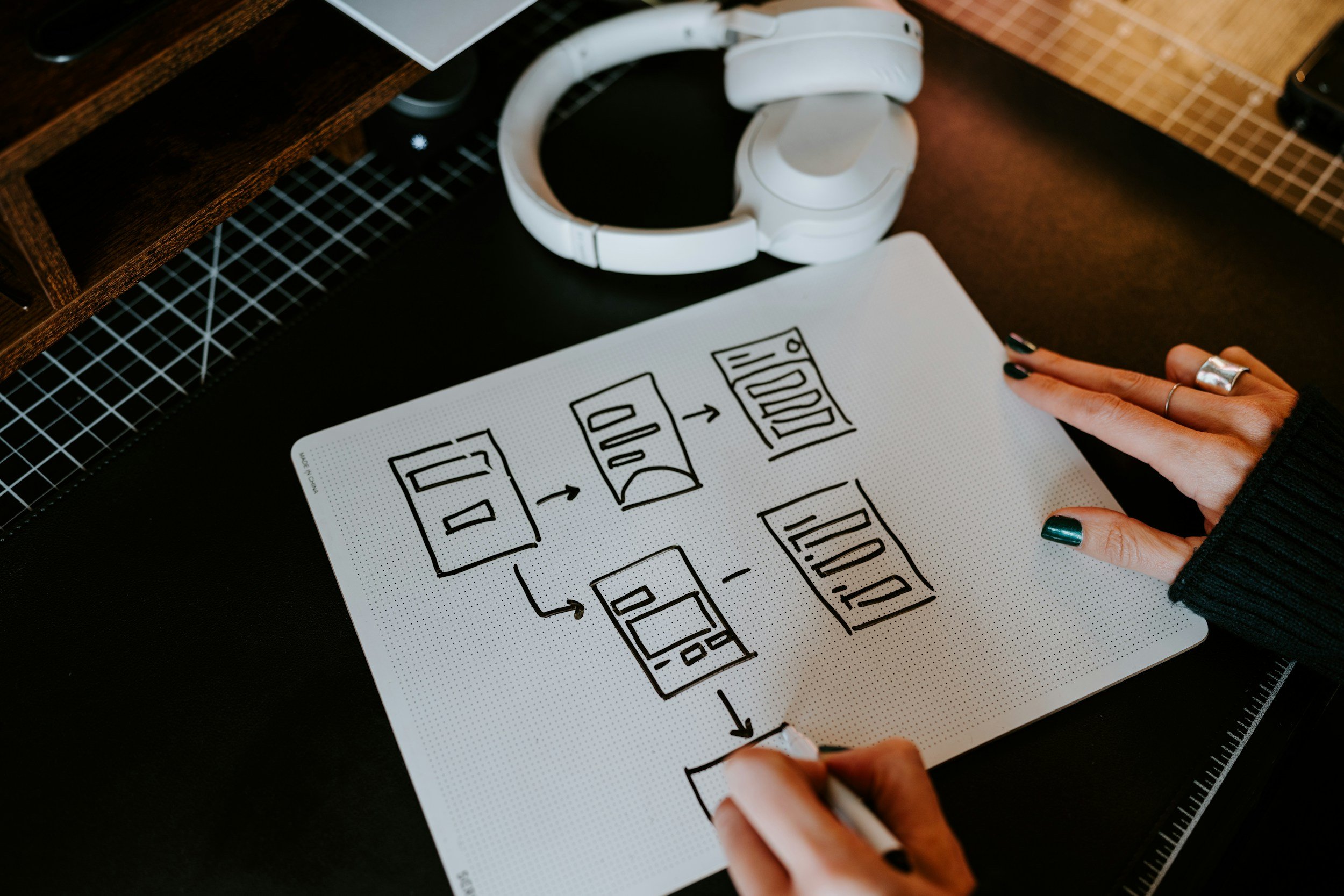
User-Centered Redesign
Optimizing UX for Resource Pages
CONTEXT
My client, a nonprofit organization, faced a critical issue with their high-ranking informational pages on cancer types, failing to engage users despite containing valuable content.
Problem: While the pages ranked well for SEO, user engagement suffered with a high bounce rate and less than a minute average session time. The content, intended for distressed individuals, was overwhelming due to its dense, unsegmented text, lack of engaging multimedia, and long scrolling, negatively impacting the mobile user experience.
To solve this, I initiated a thorough analysis of the performance data for the cancer advice pages, aiming to enhance user engagement and overall effectiveness. By understanding user behavior and identifying pain points, I sought to develop targeted strategies that would address these issues and improve the user experience.
By conducting a thorough analysis of the performance data, I was able to identify key user insights
MY ROLE
USER BEHAVIOR ANALYSIS
I examined the bounce rate and session duration metrics for these pages using Google Analytics, along with a heat map analysis using HotJar to gain insights into user interactions and identify points of drop-off.
I created user personas that accurately represented the various types of visitors interacting with the content to understand their behaviors and needs, and pinpoint specific pain points.
USER PERSONAS
Ultimately, my analysis revealed that users were likely leaving the page due to navigation difficulties, particularly when seeking specific advice during stressful moments. The existing layout obstructed easy access to vital information, and there was a clear lack of engaging elements, such as videos, that could help break up the dense text. With these insights in hand, I was positioned to develop targeted strategies aimed at enhancing user experience and engagement on the cancer advice pages.
I hypothesized that breaking up the text and introducing videos and interactive elements would keep users on the page longer. To validate this, I created an A/B test to compare the performance of the existing design with my new proposed structure.
A/B Testing
TESTING & VALIDATION
To enhance the user experience of the cancer advice pages, I implemented an A/B testing strategy aimed at optimizing content engagement and retention. My goal was to validate the hypothesis that a redesigned layout—featuring segmented content, multimedia elements, and visual breaks—would drive improved user interaction and session duration.
Versions:
Control: The existing cancer advice pages with a dense text layout (initially targeted to 80% of the audience).
Variant: The redesigned cancer advice pages incorporate shorter paragraphs, embedded videos, and visual enhancements (initially targeted to 20% of the audience).
Audience: Users who fit the user personas identified during the research phase, specifically:
Individuals seeking cancer-related information
Users navigating the site during stressful moments, such as a diagnosis or supporting loved ones.
Primarily located in the United Kingdom
Primary Metrics:
Session Duration: Measuring the average time users spend on the pages to assess engagement.
Bounce Rate: Tracking users who leave without interacting to determine the design’s impact on user retention.
We included both new and existing users in this experiment to ensure the redesign enhanced engagement without increasing bounce rates. Starting with 20% of the target audience allowed for iterations based on initial feedback while minimizing disruption to the majority.
If successful, we expected decreased bounce rates and longer session durations, signaling that users were engaging more deeply with the content and accessing the necessary information efficiently.
The A/B test validated the effectiveness of the new design, showing a decrease in the bounce rate and an increase in session duration. This indicates that users are engaging more effectively with the redesigned cancer advice pages, allowing them to find the information they need more efficiently.
A/B Test Results
MEASURING SUCCESS
Bounce Rates:
The variant page had a lower bounce rate of 21.5%, with a 98% probability of being better.
The control page had a higher bounce rate of 29%, with only a 2% probability of being better.
Session Duration:
The variant page led to a longer session duration of 8 minutes and 42 seconds, with a 98% probability of being the better version.
The control page had a shorter session duration of 6 minutes and 17 seconds, with only a 2% probability of being better.
Final Solutions
I collaborated closely with the web development and content teams to ensure the new design was implemented effectively, retaining SEO value while enhancing the user experience.
Solution: The redesigned pages incorporated several key enhancements aimed at improving user engagement and accessibility:
Content Segmentation: We transformed dense information into shorter, more digestible paragraphs with clearly defined headings, making it easier for users to find relevant details quickly.
Engaging Multimedia: We integrated embedded videos and interactive elements to create a more dynamic and visually appealing experience, enhancing user interaction with the content.
Visual Design Improvements: We utilized background colors and strategic visual breaks to alleviate the perceived length of the text, facilitating a more comfortable reading experience, particularly on mobile devices.
By implementing these design changes, I ensured that the new structure was lightweight and SEO-friendly, preserving the pages' search rankings while significantly enhancing user experience.
RESULTS
RESULTS
The redesigned pages delivered a substantial increase in user engagement with users spending more time interacting with content, while the reduced bounce rate indicated enhanced information accessibility.
It also drove user interaction with a higher multi-page session and a significant increase in pages viewed per visit. This indicated that users are exploring more content, staying on the site longer, and moving further down the conversion funnel.
Average Session Duration: Increased by 11%.
Bounce Rate: Decreased by 13%.
Pages per Session: Increased by 13%.
Conversion Rate for 5+ Page Views: Increased by 40%.


